The sweet chestnut (Castanea sativa) is the tree of the year for 2018. Due to its diverse facets this tree species connects very different areas and is particularly interesting for many users. Sweet chestnut was an important food source for a long time because of its fruits and is to be taken seriously as a forest tree due to its rapid growth. Its durable wood makes it a valuable supplier of raw materials and its seasonally late but intensive flowering makes them a significant bee pasture.
Description of the wood
The sweet chestnut is a "heartwood" tree and as such, it has a consistent development of coloured heartwood and there is a significant difference in colour between heart and sapwood. The narrow sapwood is a dirty white to yellow colour and freshly cut sapwood is yellowish brown or light brown. Under the influence of light it will darken to a light brown till dark brown tone. The wood of the sweet chestnut belongs to the ring porous wood species and is optically very similar to oak. On the cross section, however, wood anatomical tests reveal the differences quite well. Characteristics of sweet chestnut are the tender flame tracts and the very narrow wood rays, which can only be seen through a magnifying glass and are usually arranged in single rows (Fig. 1.).
The early wood pores are very large with multiple tylosis and appear quite oval under the microscope (Fig. 3). They can be seen as characteristic pore grooves on the cross-section and on the tangential areas with the cathedral effect (Fig. 2). In comparison, the late wood vessels are very small and ordered in small rows which are narrowly radial to oblique and often forked. Axial parenchyma is only sparingly present in the basic fibrous tissue and can be seen as a strand with two to five cells (Fig. 3). The wood rays are exclusively arranged in single rows and are thus not to be detected on a macroscopic scale. (Fig. 1 and 2).
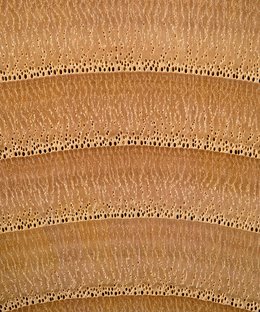
Fig. 1a: The cross-section of sweet chestnut with clearly defined growth rings and coarse early wood pores arranged in the ring; fine flame tracts in the latewood vessels and barely noticeable wood rays (Picture: Holzforschung München).
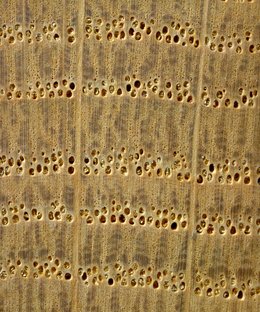
Fig. 1b: Cross-section of oak which is also ring porous with bright, radially orientated fields of the latewood vessels (flame tracts) and clearly prominent bright wood rays (magnifying glass) (Picture: Holzforschung München).
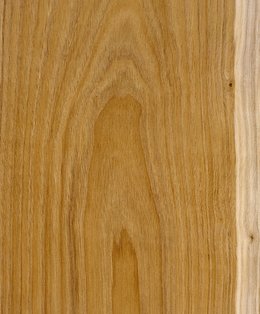
Fig. 2: Tangential cut of the sweet chestnut. On the right of the picture the sapwood is clearly distinguishable from the heartwood. The decorative cathedral effects arise due to the interaction of the pronounced growth ring borders and the large early wood pores of the pore-ring (magnifying glass) (Picture: Holzforschung München).
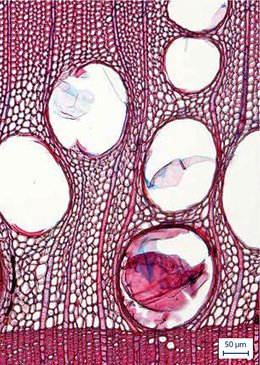
Fig. 3a: Microscopic photograph of the sweet chestnut: Cross-section with clearly noticeable growth ring borders; early wood vessels with tylosis; the small latewood vessels are encompassed by basic fibrous tissue (Picture: Holzforschung München).
Overall character
Decorative ring porous hardwood with clearly distinguishable difference in colour between sapwood and heartwood; the heartwood is yellowish to light brown and can darken to dark brown; borders of the growth ring are clearly visible; ring-shaped arrangement of coarse-pored early wood vessels form distinct cathedral effects and ribbons on the longitudinal surface; the wood is very similar to oak but can be differentiated under a magnifying glass due to the very narrow wood rays.
Characteristics
The density of chestnut wood lies within the average but slightly below the well-known domestic broadleaved species (Tab. 1). The unusual feature combination "durable and elastic" is well expressed in the mechanical characteristics of the wood: The tensile strength is 135 N/mm2, the rigidity is extremely low at 9.000 N/mm2. As a result, the flexural strength of 80 N/mm2 is lower than the broadleaved trees listed in Table 2 and the wood of the pine tree. Values for hardness are also significantly reduced.
The moisture-physical behaviour of the wood is a positive characteristic for the utilization of the wood. Both, volume shrinkage and differential shrinkage / swelling, are low in comparison to other types of wood (Tab. 3) and results in a good dimensional stability. The water vapour permeability is low, the fibre saturation humidity is below twenty-two percent.
The high content of acid (pH of the heartwood <4) leads to corrosive discoloration in contact with ferrous metals in damp environments. The wood of the sweet chestnut possesses a good natural durability (class 2 according to EN 350).
In order to judge how the wood should be used, the round wood characteristics of how the sweet chestnut grew in the forest should be taken into consideration. Wood shake can be a problem with sweet chestnut and can devalue the wood for lumber production (Fig. 4). As a result, the production of quality wood from the sweet chestnut has to be consistently adapted to the local site and climate conditions in order to guarantee that abrupt changes in growth can be avoided (in particular during juvenile growth).
For the various assortments of sawn lumber the moisture should be reduced slowly in order to reduce the danger for cracks and warping. Cell collapse is possible if the drying gradient is too high. The dried wood is easy to work (sanding, polishing, turning, drilling) and shows a satisfactory to good behaviour on the surface and in finger joints.
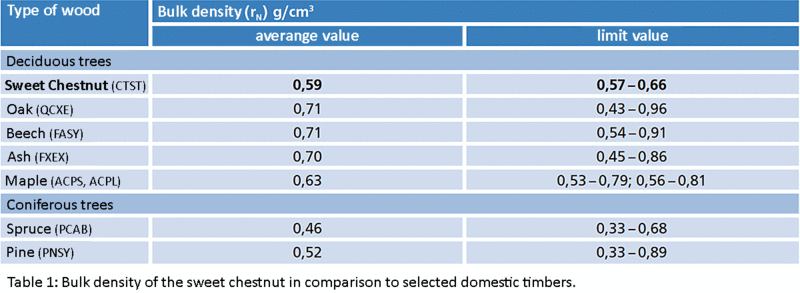
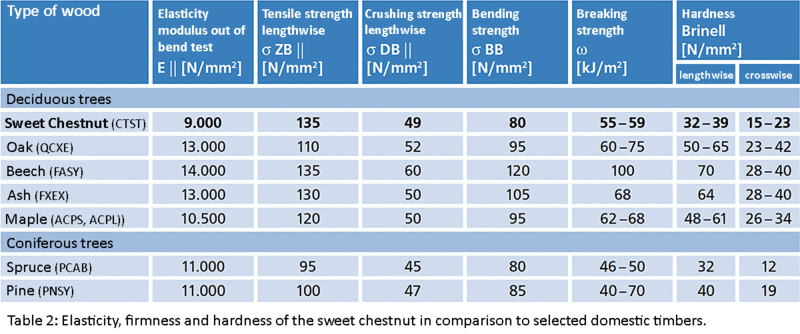
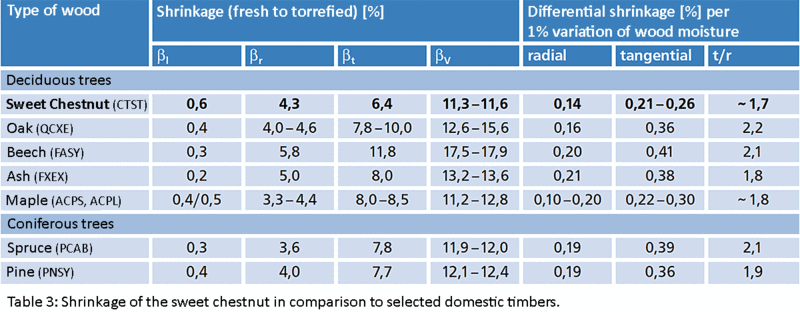
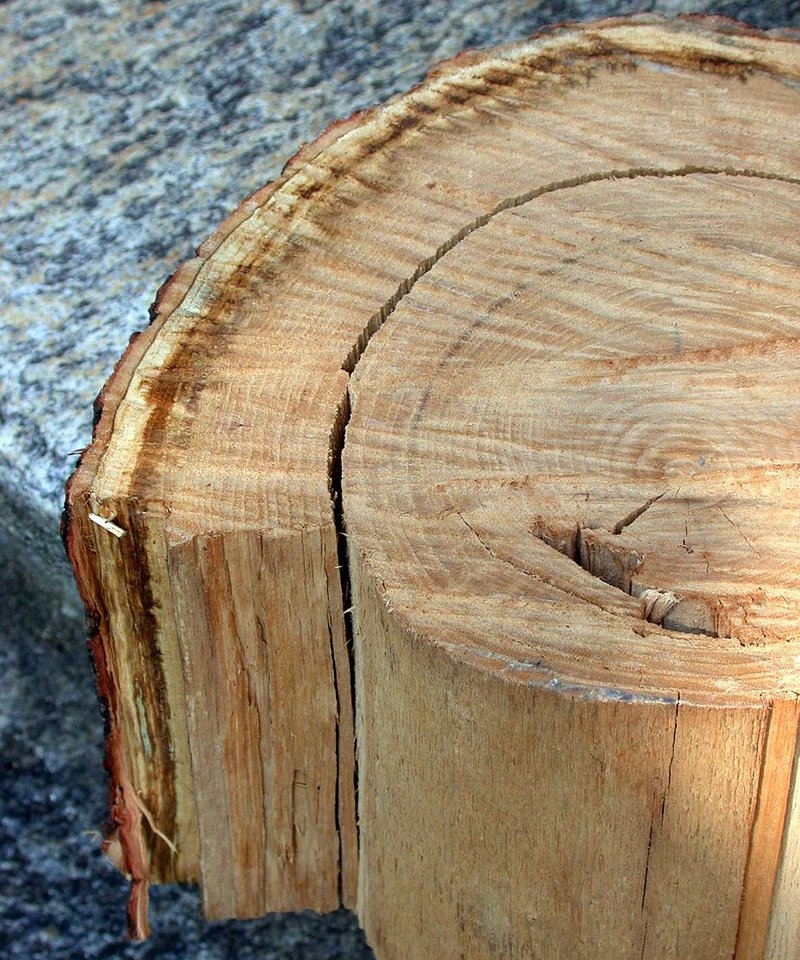
Fig. 4: Cross-section of the sweet chestnut displaying distinctive wood shake (Picture: P. Fonti, WSL).
Usage
For the production of quality wood and veneer the round wood trunk has to possess a sufficient level of quality and dimension (<D4). Veneers for knives are produced from high-calibre wood. Additionally, the straight growing and knot free wood of exceptional quality can be successfully marketed for window and door construction, the production of staves as well as interior and exterior construction timbers.
Sweet chestnut wood has been and will continue to be used as a locally growing source of timbers in house construction, especially in the Mediterranean countries. Lower quality assortments are valued in gardening and landscaping as well as in the production of decking boards, garden furniture and flooring in moist areas. The thin heartwood of the sweet chestnut is milled for the creation of posts and palisades and can be used in contact with the earth and water without chemical protection or modification treatments. The good tolerance of the wood to be painted makes it treasured by creative artists (Fig. 5). Similar to the black locust, the sweet chestnut is used untreated for protective constructions against creeping snow and avalanches in the form of tripods and has a life expectancy of thirty years (Fig. 6).
In the wood material industry sweet chestnut can be used for the creation of particleboard and fibreboard in principle. Usage as an OSB board in construction was unsuccessful. In the future, the sweet chestnut will be given more attention by the bio refineries.
Bread and honey
The sweet chestnut is also used culinary. Earlier, the chestnut was considered the bread of poor people. Today it is loved by allergy sufferers, health conscious individuals and self-sufficient persons. Roasted Maroni can't be left out of any Christmas market. The gluten-free fruits can do even more: the flour can be made into bread, it can be used in soup, they are suitable in salads and on pizza and are a delightful side dish to wild game. One should also not forget about sweet chestnut purée.
Sweet chestnut honey is also a sweet and special topping not only for sweet chestnut bread. The scent and taste of the honey is very intensive and aromatic. The honey also has a considerable amount of bitter components which makes it an extraordinary specialty. The sweet chestnut also makes for good bee pasture since it offers quite a lot of nectar and pollen for flower searching insects.
Literature
Articels of LWF Wissen 81 (German only):
- Richter, K.; Ehmcke, G. (2018): Das Holz der Edelkastanie – Eigenschaften und Verwendung, PDF (413 KB)
- Redaktion LWF Wissen (2018): Der Brotbaum der Bergbauern, PDF (91 KB)
- Illies, I. (2018): Edelkastanienhonig – ein besonderer Sortenhonig, PDF (134 KB)
You can also get a PDF (8,4 MB) from the whole LWF Wissen 81 "Beiträge zur Edelkastanie" (German only).

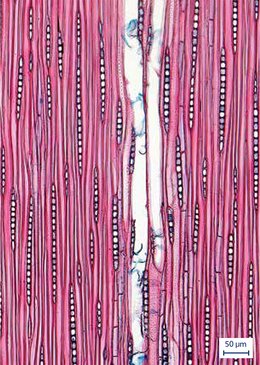
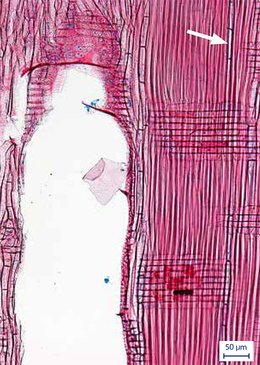
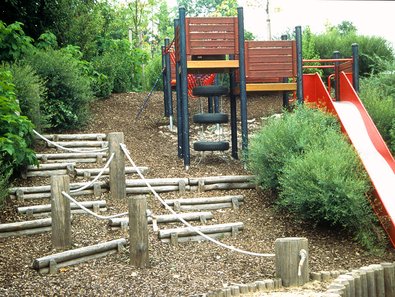
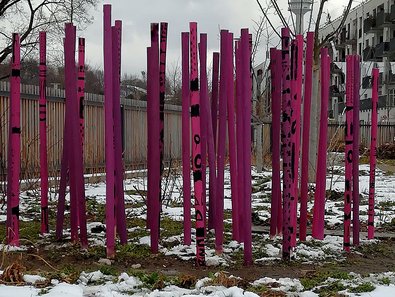

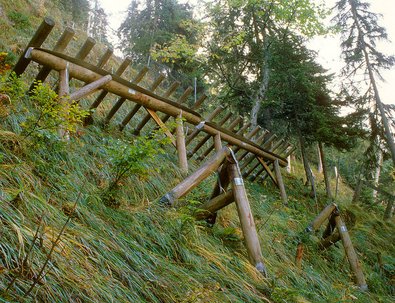
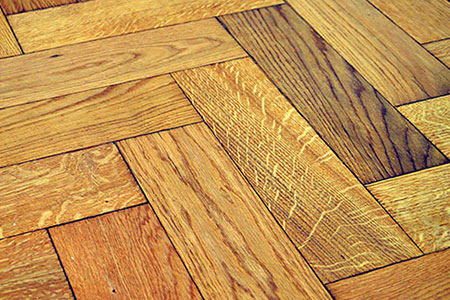
![[Translate to English:] [Translate to English:]](/assets/_processed_/a/1/csm_edelkastanie_fruechte_maronen_b223d9f7e2.jpeg)